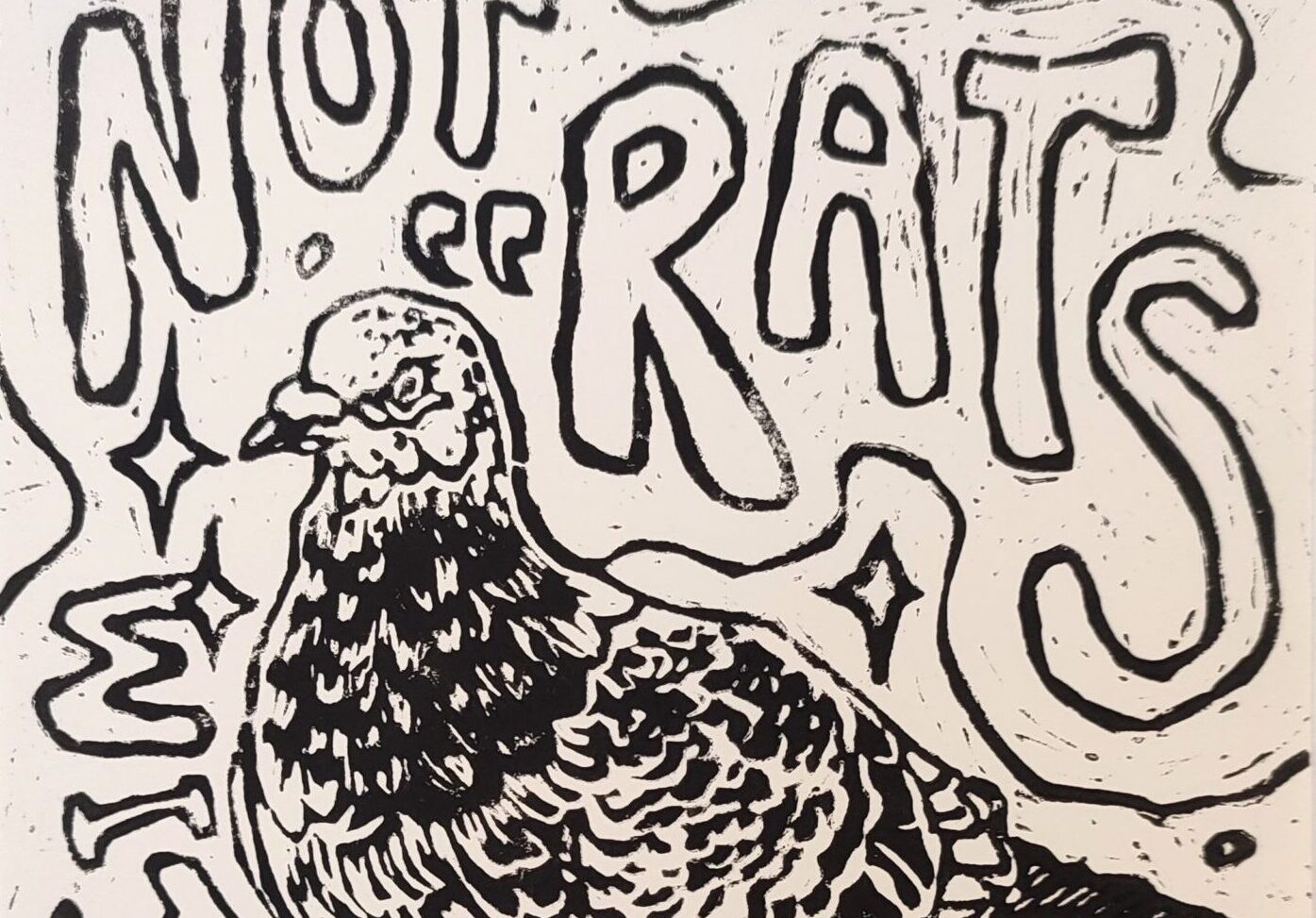Project 4 involved time-based work, using performance, video, film, slides show, audio, or computer technologies to document everyday life, exploring the notion of familiarity and everyday activities. In relation to the idea of intermedia (meaning ‘between media’), the project intended to blur the gaps between art and life.
To kickstart the project, we were tasked with filming three 1 minute videos with a rule: one static, one POV and one structured.
To inform my choice of theme, I watched a variety of cinematic artworks. This included a 68 minute experimental film from the 1920s titled “Man with a Movie Camera” (1929) by Dziga Vertov”, capturing ordinary life in the Soviet Union. I found this interesting due to the time period, following the events of the first world war and the 1917 Bolshevik Revolution under Vladimir Lenin but before the devastation of the second world war,- during which the USSR would suffer in 20 million casualties. The film conveyed the role of both men and women in the communist Soviet society, showing scenes of workers, leisure activities and politics, as well as life events such as birth, death, marriage and divorce. The music played over the silent film changed the mood of the scenes, repeating a series of tense, upbeat and melancholy musical scores. I particularly liked how the film also demonstrated the Soviet culture through fashion styles, with women wearing stockings, ballet shoes, contrasting makeup of the roaring ’20s and short hairstyles. Jeanette Parris similarly uses setting to contextualise her animation ‘Catching Up’ (2020), using recognised brands including Barclays, Specsavers and Superdrug.
I also found Jenny Hogarth’s work ‘Flo Co Motion’ (2022) inspiring as I enjoyed the humor elements which came from Bo Mullholland’s philosophical insights as well as the dynamics of their mother-son relationship. The film offers a duel-perspective which moves sporadically around the screen, conveying the two points of view while reflecting Bo’s ‘atypical’ outlook on the world as a result of his autism.
From my initial research and experimentation with film, I felt most interested in my video of a pigeon. So-called ‘rats with wings’, I find these less ‘intellectual’ creatures both intriguing and amusing; although I have had my fair share of bad experiences with the pesky seagull (involving bird poo and stolen sandwiches) I enjoy watching them, particularly when they nest on top of houses where I live to raise their young. The nature of filming wildlife is that I cannot control them, meaning my only rule for the project was to choose a bird at random to follow at a time. This resulted in a variety of video lengths which I edited to form a compilation, overlaid with audio from these birds and the streets in which they inhabit.
During my time at home in Fleetwood over the winter break, I collated further documentation, but this time with seagulls. These pesky birds are everywhere in Fleetwood compared to Edinburgh due to its history as a fishing town, so I took the opportunity to gather photographs, videos and audio. I also took a trip to the docks in order to capture audio of squawking seagulls, as they gather there to catch any scraps left by fishing boats.
Links to some of my videos uploaded to YouTube:
I found it interesting how- through consciously listening to the video playback- the sounds of these very un-exotic, often despised creatures are quite therapeutic to me. This is due to my familiarity with the sounds (I would hear them almost everyday) thus achieving my intention to make the everyday extraordinary.

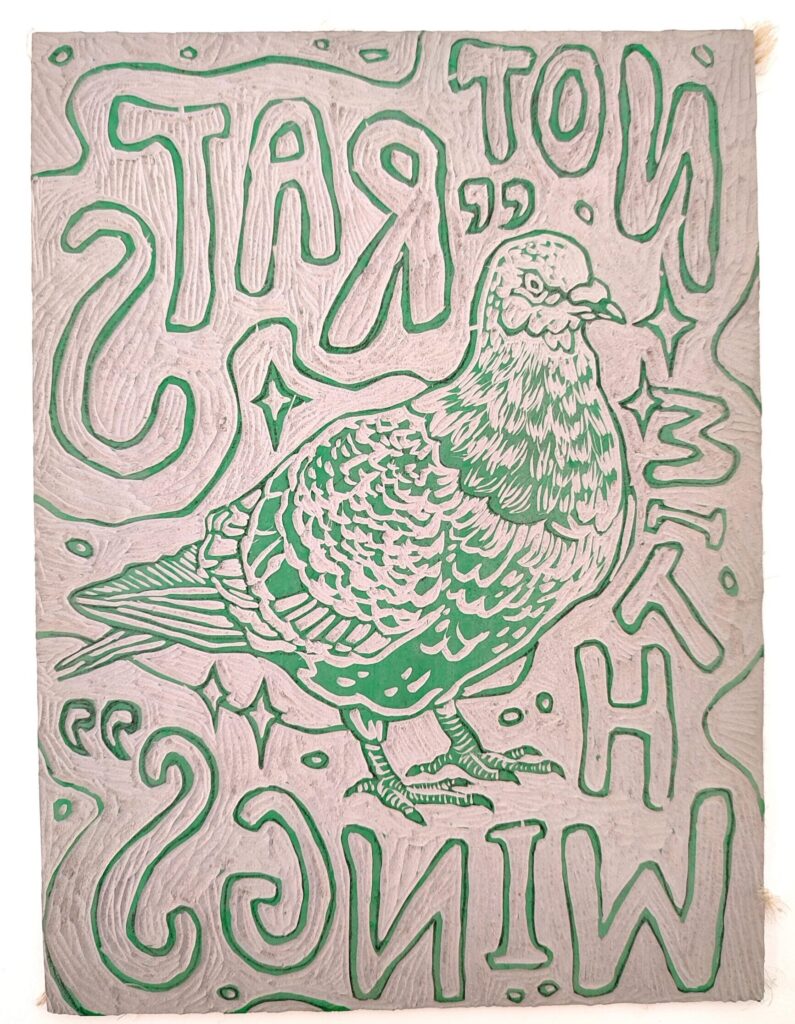
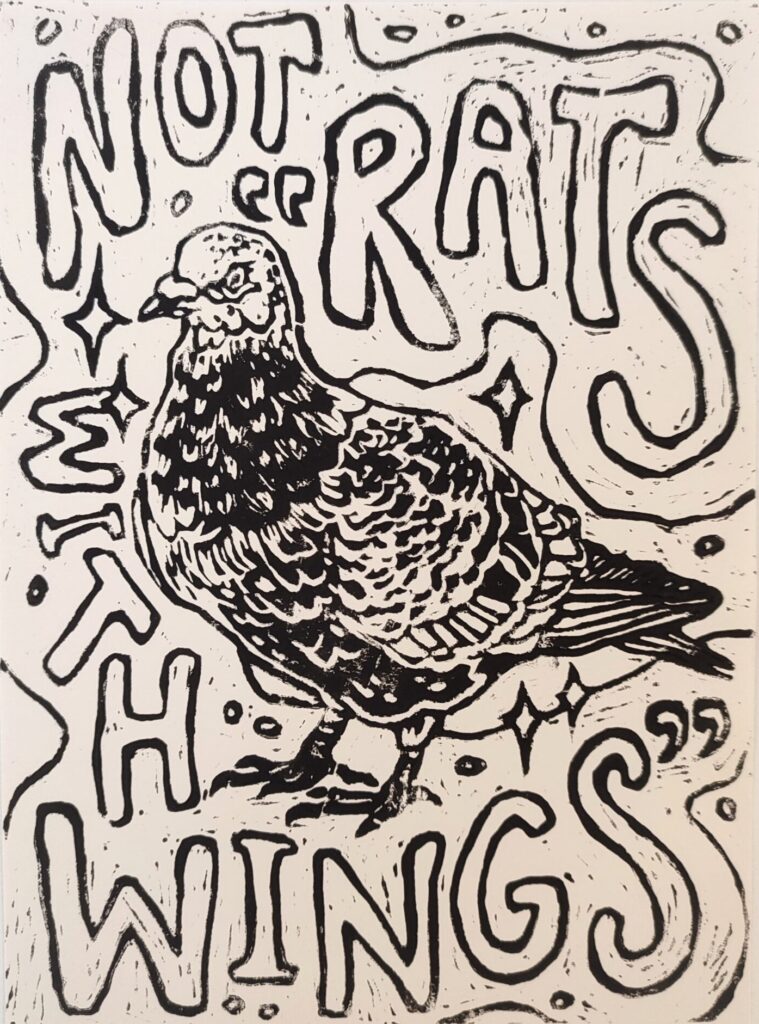
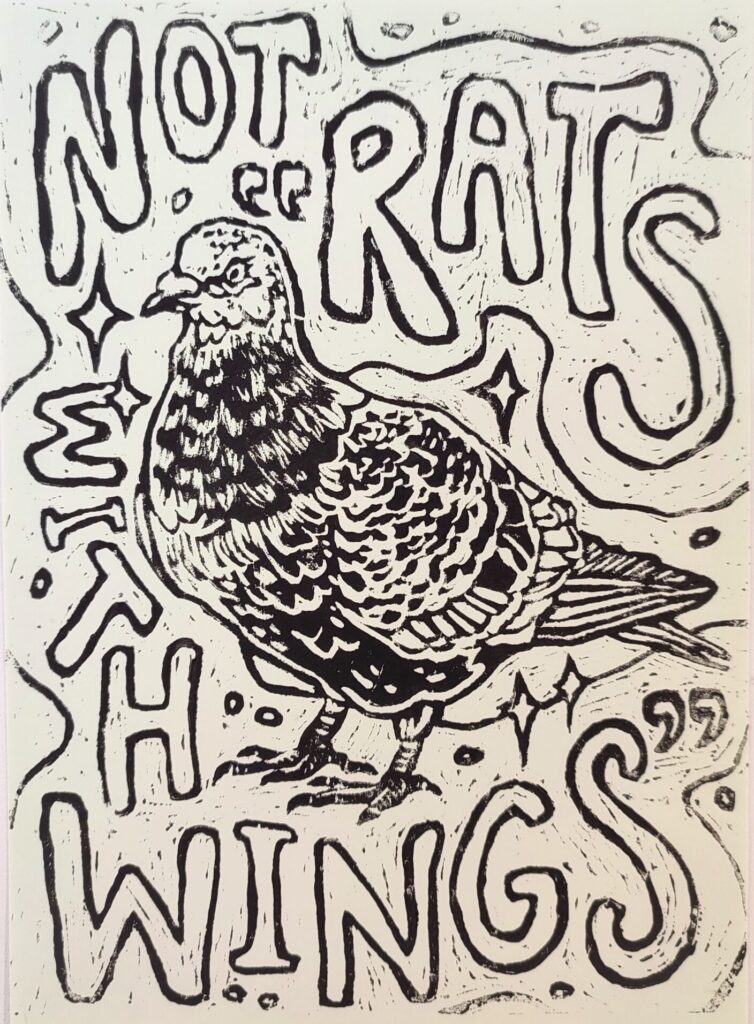
After collating various videos of pigeons, seagulls and crows, I began to experiment with editing the videos together to develop them. I explored a range of ideas for my videos, including playing them simultaneously in a grid format, side by side, projecting them across 4 walls of a room/one wall randomly and creating a video collage.
With the intention of being able to both watch my video on a screen and project it in a space, I decided to collage multiple videos together, exploring how the birds interact with each other on the display despite being filmed separately. The sound of the birds was an important factor for my resolved work, so I edited the audio to layer over the videos and muted others to make my audience hear them as I did in person.
The compositional choices were influenced by Jenny Hogarth’s moving/split screen videos, creating a sense of narrative as the different scenes play out. After viewing the videos on a larger screen with peer feedback, I decided to develop my first split-screen video through adding additional sound effects.
I also experimented with introducing (edited) human voices to the videos, adding further comedic elements to the work. This was inspired by Patrick Goddard’s 2019 film, ‘Animal Antics’. Although I was unable to access the full film, I watched the trailers available on YouTube, following a young woman and her dog while visiting a zoo. The film is set in a dystopian world where all the wildlife has been reduced to the animals in the zoo. The dog is given a human voice which mocks the undomesticated animals, resembling familiar xenophobic comments made by bigots and politicians such as Donald Trump. This idea connects well with my project, which focuses on the birds which people believe should be exterminated as pests rather than protected.
However, I found this was only successful in short clips as it was difficult to identify which bird was saying what due to their mouth not being visible, so I decided to develop my split screen video with further audio as my final film (below).
In addition to the full-length video, I edited a version which focuses on the two pigeons against the street floor. I think it is interesting to hone in on the different patterns and colours of the birds and floor; these are ordinary things which become quite extraordinary to look at, yet they are not given a second thought in day-to-day life.
To exhibit my video work, I would have ideally had a single dark room/area with the video projected on the wall and surround-sound speakers to immerse audiences in the audio. As I did not have these resources, I made a mockup of a gallery space in Photoshop and used a projector to experiment with playing the video on the walls and floor of the sculpture court. My print would also be displayed at the entrance to the room along with a short description of the video.
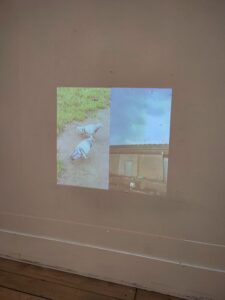

Matt’s Gallery – Catching Up (mattsgallery.org)
